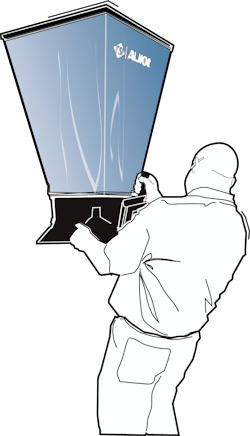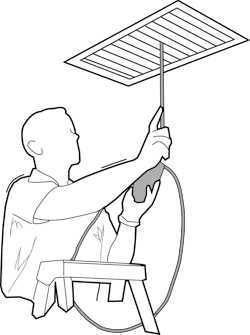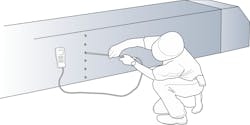Why Home Performance Ratings Don’t Tell the Whole Story
Both the home performance and the HVAC industry are moving closer together as they realize the key to energy savings is, and always has been, the heating and cooling system. This movement is leading to a common recognition that current assessment methods used to rate and score an HVAC system is woefully inadequate. Let’s take a look at a solution to this longstanding oversight in home and HVAC performance reporting.
Why is Reported HVAC System Efficiency Overrated?
If you go back to the roots of the home performance industry, you’ll see it focused strictly on the building envelope. The scientists who drove the early movement were funded by government and insulation manufacturers.
At the same time, the HVAC industry was on a different track and the knowledge at that time caused the efficiency focus to be on equipment only. This was primarily because everyone assumed that once a furnace or air conditioner was installed, the laboratory efficiency was delivered into the building. Unfortunately, some of the HVAC industry is still following that line of thinking today.
Initially, home performance audits only recorded the HVAC equipment size and rated efficiency. Later, duct locations were added. As knowledge increased, accessories and energy efficiency measures were used to estimate system efficiency. Eventually, based on blower door technology, duct pressurization testing was added to simulate a volume of duct leakage. The duct test data, although far from true system performance, was used to estimate energy losses.
Unfortunately, these practices and technologies often overrate the field performance of an HVAC system. These tests cannot “see” the interaction of many system defects and the physics of installed performance. Although there is some testing, it only measures a few aspects of the installed HVAC system performance.
With the increasing interaction between the home performance and HVAC industries, our hope is that the evaluation of HVAC system installed efficiency becomes more realistic. This would have a direct and immediate impact on performance ratings and scores. Unfortunately, that impact will be much lower HVAC and building efficiency ratings and scores. A significant reset will need to occur.
Measurement of Actual Performance
The HVAC industry measures constantly. For more than five decades, HVAC technicians have carried and used electrical meters, temperature and humidity instruments, refrigeration gauges, static pressure and airflow instruments. These measurements are backed up by standards that have supported and improved field testing through 50 years of daily use.
Installed HVAC system performance can be field measured and scored. By comparing the results of this testing to laboratory equipment efficiency ratings, we see the level of deterioration in equipment efficiency once it is installed in a building.
A substantial volume of field test data confirms the average installed HVAC system performs consistently at less than 60% of equipment-rated efficiency. For example, after a new 95% AFUE furnace is attached to the electrical, gas, venting, and distribution system in a building, the system actually operates at less than 57% AFUE.
Once you understand the current assumptions made by today’s widely-used rating systems, you’ll see that your customers are deserve a more accurate representation of their HVAC system and building efficiency. This is possible when field installed system performance is measured on an individual system.
Installed HVAC System Performance Measurement
A trained HVAC technician can measure and score the performance of an installed HVAC system in a home in about an hour. A typical 10-ton commercial system takes about an hour and a half.
Test instruments and information needed to perform system scoring include:
- A multi-sensor thermometer/hygrometer instrument including seven probes to capture and record temperatures throughout the system at a single point in time.
- A commercial grade air balancing (capture) hood assembly.
- A programmable digital anemometer to both read airflows inaccessible to a balancing hood and verify hood reading accuracy using ASHRAE 111.
- An electrical power meter to measure and record system operating watts.
- You will also need a complete set of manufacturer’s engineering data matching the equipment.
With these instruments and information in hand and adequate training and field practice, you can test, calculate, and score the installed performance of a forced-air HVAC system.
To field test a system, you’ll need to gather the following data:
- Measure and record airflow entering the occupied space at each supply register. This conditioned air carries needed heating or cooling from the HVAC system.
- Measure average dry bulb supply register air temperature. In cooling mode, measure and record the average supply register air enthalpy. These measurements document the air temperature entering the conditioned space.
- Measure average dry bulb return grille air temperature. In cooling mode, measure and record average return grille enthalpy. This is the average air temperature leaving the conditioned space.
- For a more advanced version of this test in cooling mode, measure and record the operating conditions of the system and the watt consumption under full operation conditions.
Calculations required for the basic installed system scoring method include:
- Total supply register airflow, by adding the register airflows together.
- Calculate the average supply register air temperature and then calculate the average return grille air temperature
- Then calculate the temperature or enthalpy difference between the average supply register temperature and the average return grille.
- Calculate the heating sensible Btu entering the occupied space, as delivered by the HVAC system, multiply the supply register total airflow by the temperature change between the average supply register and return grille by 1.08.
- In cooling mode, calculate the Total Btuh entering the occupied space by multiplying the supply register total airflow by the enthalpy change between the average supply register and return grille by 4.5.
- Using the manufacturer’s equipment specifications, identify and record equipment rated capacity under the same conditions at the time of testing
- Divide the Btu the system was delivering into the occupied space by the equipment rated Btu at the time of the testing. This provides the performance score of the installed system. System Watt measurements can be added to calculate Field Measured System EER in cooling mode.
Of course, the full test methods are far more detailed than can be described in this short article, but it is hoped that this overview will help each of you look forward to improving the services you offer your customers.
This test method has been used for more than a decade by many HVAC and energy professionals, and is rapidly moving into the mainstream. The impressive benefit of this scoring method is the new understanding this knowledge brings to the market. All parties will be enlightened by this new perspective.
Finally, consumers have full knowledge about the field performance of their installed system. Today, consumer decisions to upgrade their systems reaches far beyond the simple potential of the equipment efficiency rating number.
What’s more is this same testing can be used by an experienced professional to accurately diagnose the system and prescribe comfort and energy upgrades for their customers.
Using the same test at the completion of the work measures and documents the improvement in system performance that a consumer can take to the bank.
Rob “Doc” Falke serves the industry as president of National Comfort Institute — an HVAC-based training company and membership organization. If you're interested in more information about this test procedure, contact Doc at [email protected] or call him at 800-633-7058. Go to NCI’s website at nationalcomfortinstitute.com for free information, articles, and downloads.
About the Author
Rob 'Doc' Falke
President
Rob “Doc” Falke serves the industry as president of National Comfort Institute an HVAC-based training company and membership organization. If you're an HVAC contractor or technician interested in a building pressure measurement procedure, contact Doc at [email protected] or call him at 800-633-7058. Go to NCI’s website at NationalComfortInstitute.com for free information, articles and downloads.



